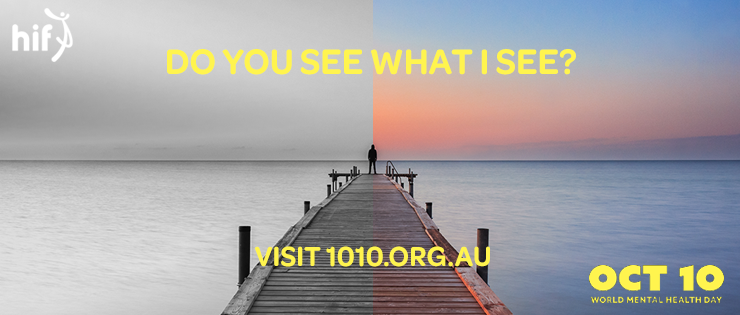Mental Health Week runs in Australia between October 8 and October 14. In the middle of this, is World Mental Health Day on October 10.

Why do we need these “special” days?
Because mental ill-health is extremely common. One in five (that’s 20%) of Australians will experience an episode of mental illness in any one year. Over the course of a lifetime, the likelihood is even higher. And if one considers the number of people indirectly affected by mental health difficulties (that is, the mothers and fathers, sons and daughters, brothers, sisters, friends and colleagues) it becomes apparent that this is an issue that’s relevant to almost everyone!
Yet we still don’t talk about it…enough.
We still don’t understand it…well enough.
And perceptions of mental ill-health are still distorted by images and descriptions that are often derogatory, extreme and unhelpful.
Thanks to organisations and campaigns such as RUOK?Day, Beyond Blue and batyr and others, we’ve made tremendous progress in recent years with regards to smashing the stigma associated with mental ill-health.
But there’s still a long way to go. Too many people still don’t seek help because they’re afraid of being judged; because of the perceived shame and embarrassment associated with being labelled. Suicide is still the biggest cause of death among young people and 8 people take their own lives every day here in Australia!
This is far too many and this has to stop!
Mental Health Australia has adopted a theme that aims to tackle some of this head on – and it’s great. Their “Do you see what I see?” campaign targets the overly negative images of mental ill-health by inviting everyone to view mental illness from a different perspective; the perspective of someone suffering OR the perspective of someone coping and functioning well!
This is a vitally important consideration. So many people with mental health problems live relatively normal lives, taking care of families and going to work each and every day. They might be suffering, but they’re still functioning. Just because we can’t “see” all their distress doesn’t mean it’s not real and doesn’t mean it shouldn’t be recognised.
In fact, this is extremely important to appreciate because knowing that there are literally millions of people who get on and lead good and productive lives despite the experience of mental ill-health can provide hope and inspiration for many others.
These positive stories need to be told just as much as the less positive ones. And we can all play a role in this.
Which leads me to another important component of the “Do you see what I see?” campaign. As well as encouraging us all to make an effort to see mental ill-health in a more positive light, we’re also invited to “Make a (mental health) Promise”.
You can make any promise you like; or you can choose from one of the pre-written promises such as “I promise to…”:
- Help reduce stigma around mental illness
- Listen openly to my family members, and help them find support if they need it
- Share my journey with family and friends to help them understand my experience better
- Ensure all staff understand the importance of mental wellbeing at work
- Make sure my students know about mental illness and how to get help
Mental ill-health is very common. But it need not be a life-sentence of suffering. And we all have a role to play.
By talking about it more and be seeking help, or helping others seek help, we (and they) can live fruitful and fulfilling lives despite mental ill-health. And by taking a more positive perspective we’ll all benefit.
For more information about “Do you see what I see?”, including a list of events and how you can make a “mental health promise” – click HERE